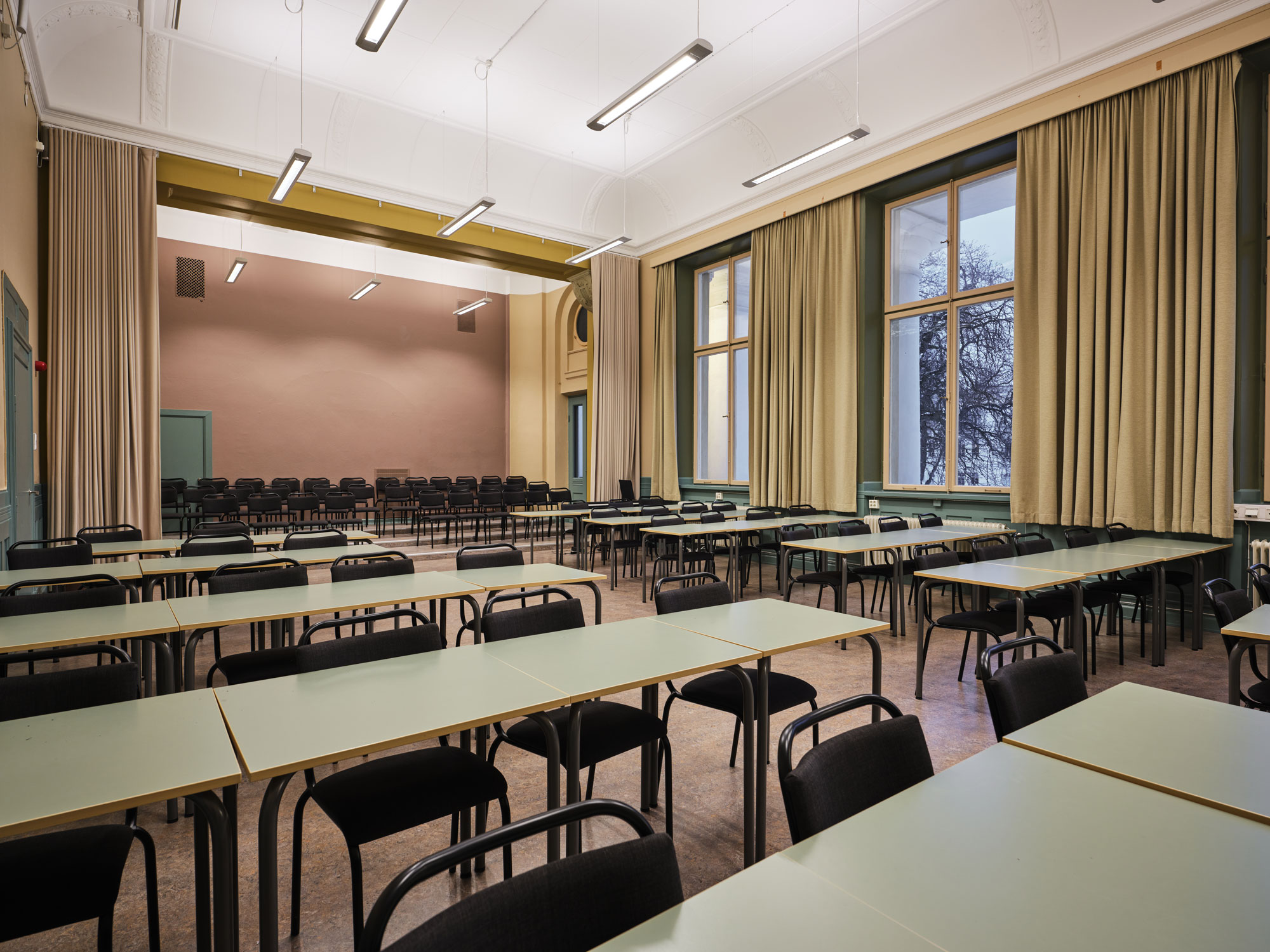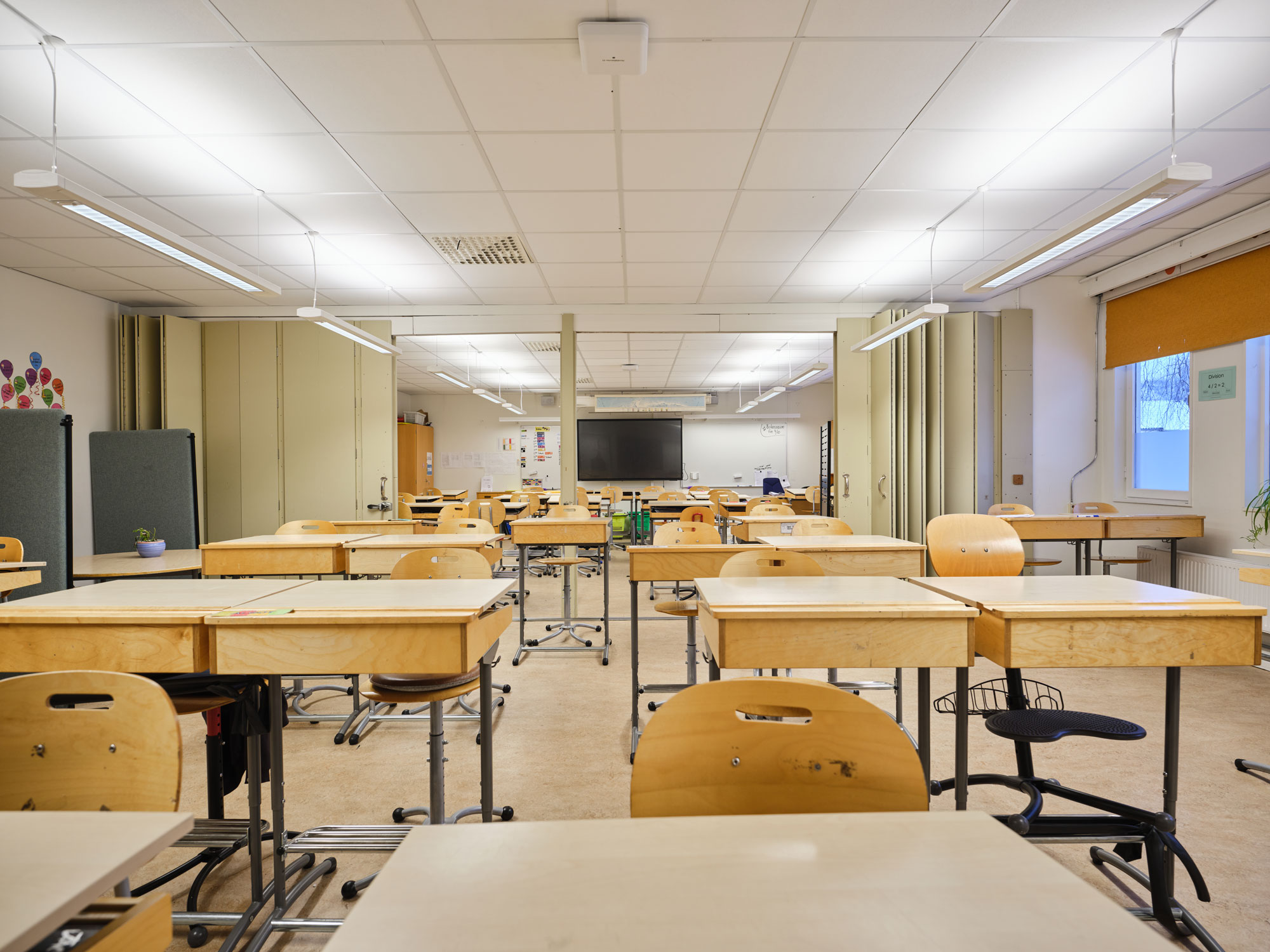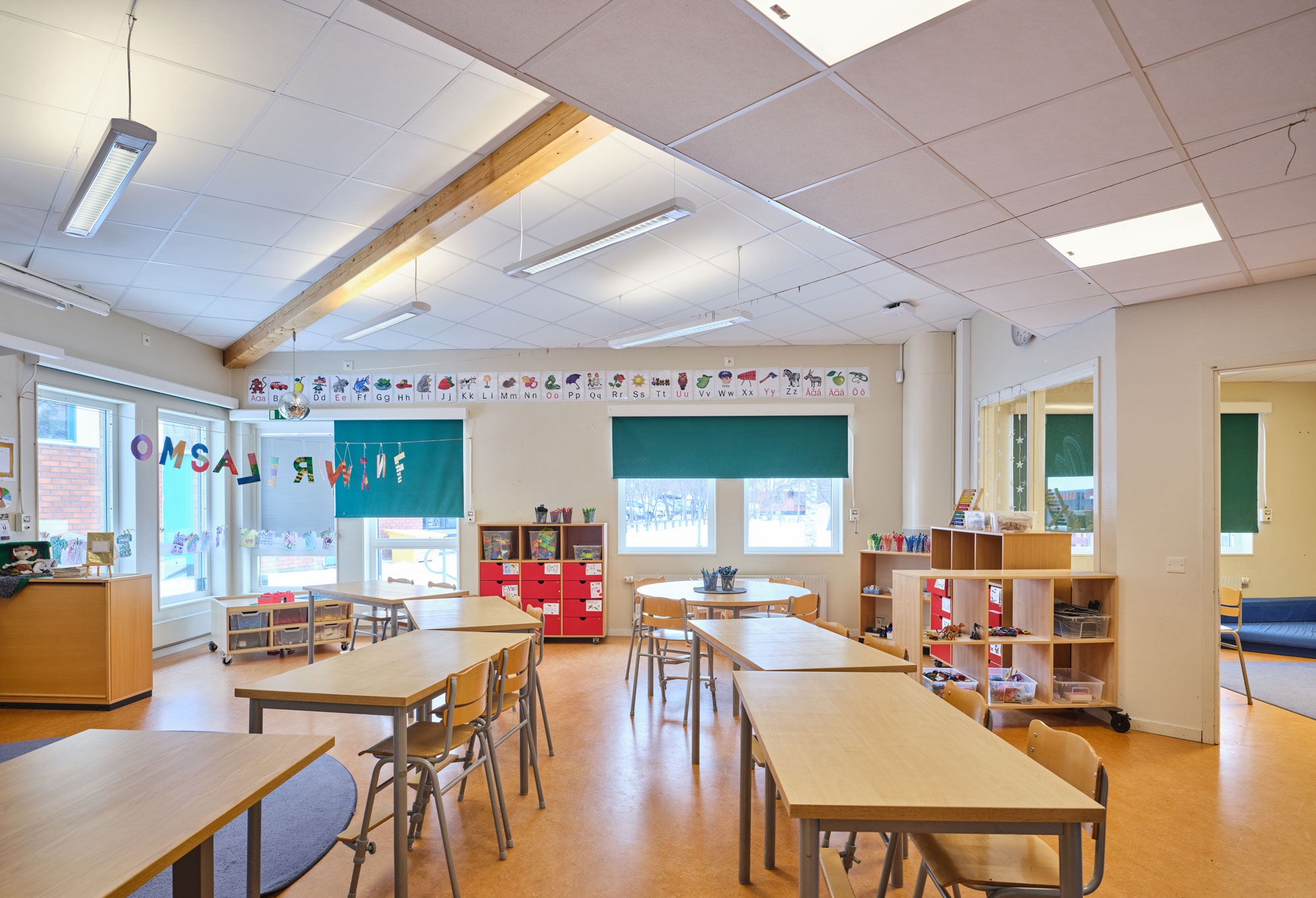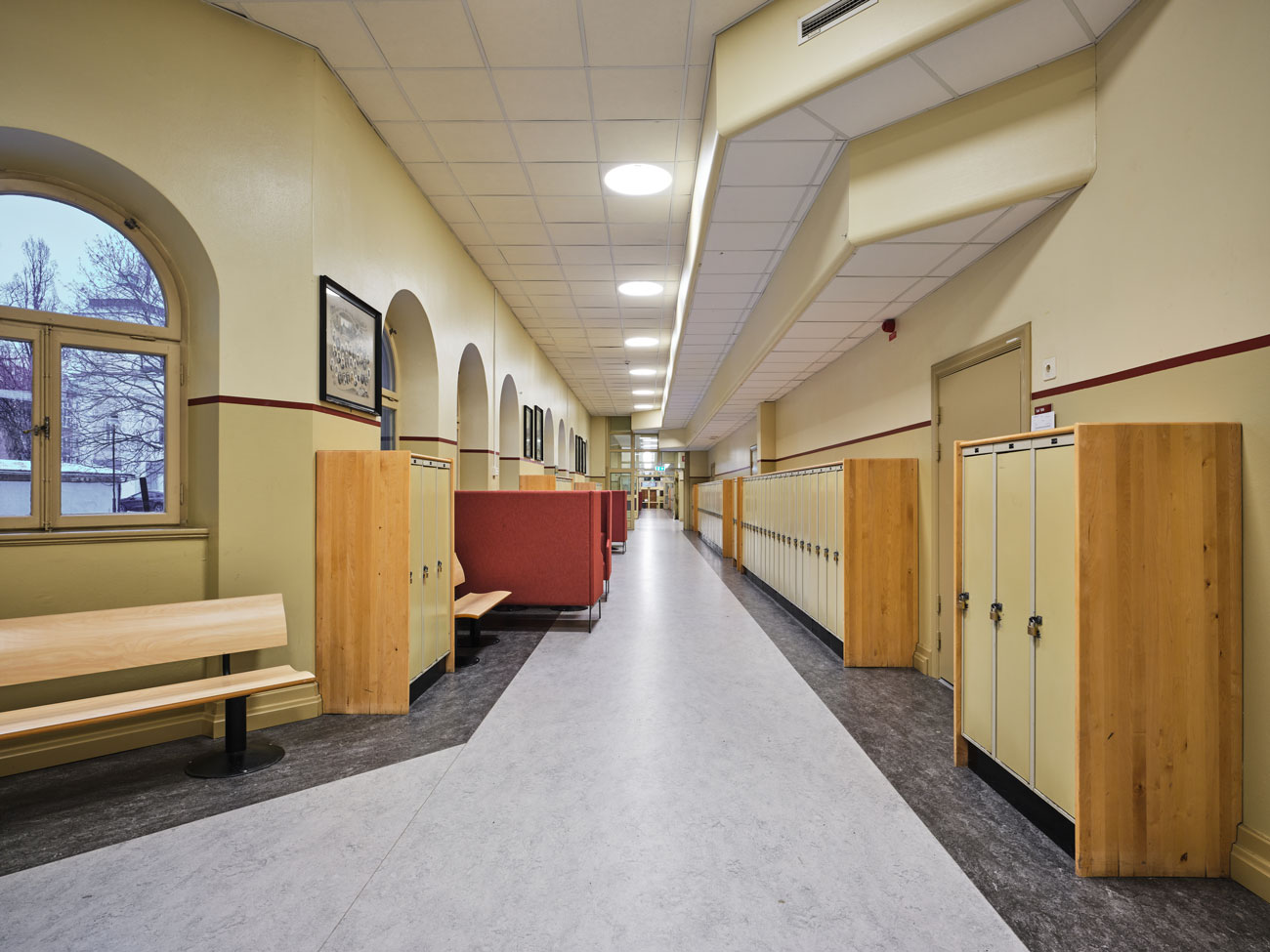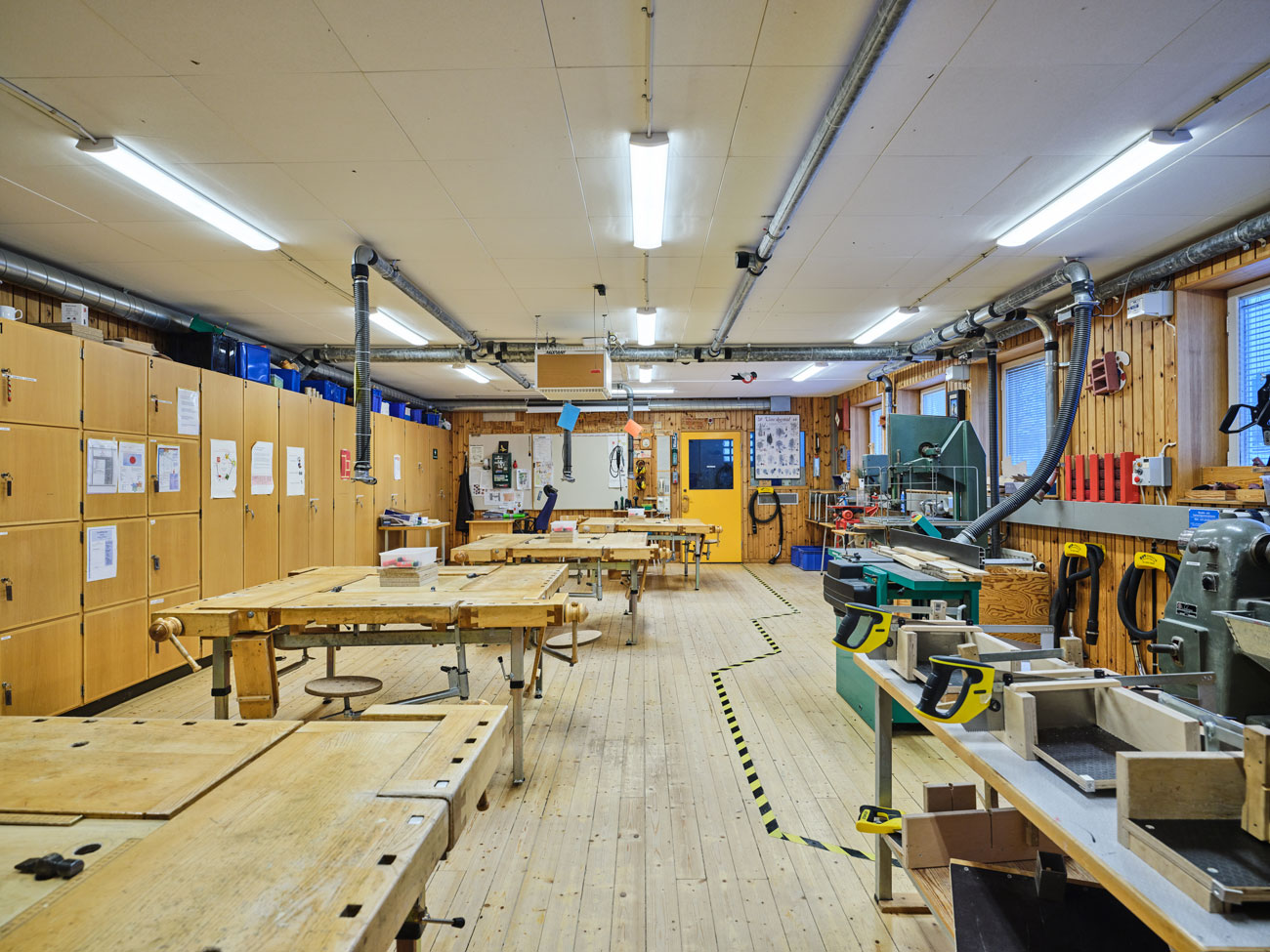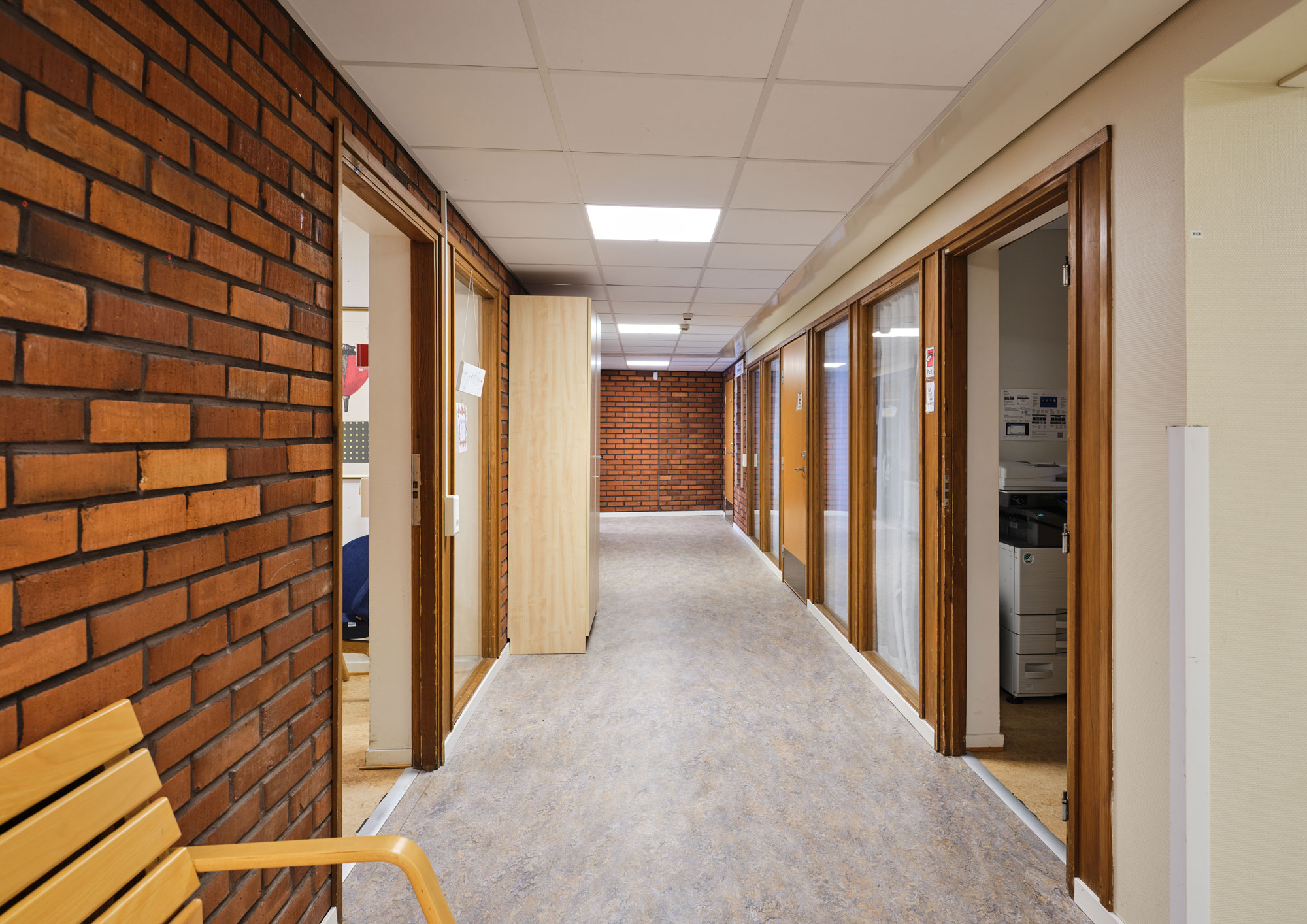
From the turn of the century to rebuilding in the ’70s, our schools are now getting smart lighting
Across Sweden’s municipalities, work is underway to replace fluorescent lamps with LEDs and to adapt luminaires and installations accordingly. Jönköping Municipality is working systematically and efficiently to meet users’ needs for good lighting and create solutions that suit different buildings and styles.
We visited three of Jönköping municipality’s school properties: a high school that was built at the turn of the century and two schools from the 1970s. Each school has its own style and architectural expression, but with a common denominator for the future: freestanding LED pendant luminaires with Organic Response control. Peter Honkala is responsible for the electrical installations in two of the municipality’s districts and he is now busy planning and designing new lighting for both properties and businesses:
“Now that we are moving from fluorescent lamps to LEDs, we have the chance to create a good learning environment for students, improve the working environment for teachers, increase energy efficiency and reduce cost, all while improving the expression of the properties,” says Peter.
Architecture rarely an obstacle to lighting control
The installation is simple and does not require any major modification of the property. All that is needed is phase, neutral and earth, and wireless buttons for the control. Although the property portfolio contains many types of buildings from different periods and with varying styles, architecture is rarely an obstacle.
“We need to be a little more careful in some school properties, like the Per Brahegymnasiet high school, which is over a hundred years old,” explains Peter. “But the installation itself is not very different from a school built in the seventies, or even today. If we miss something during planning, or if a control button is needed after everything is complete, it is very easy to adjust: instead of an installer rerouting cabling, we can simply take down and move luminaires and the lighting control according to the needs of the business.”
According to Markus Winnert, Smart Lighting Manager at Fagerhult Sweden, Jönköping Municipality is following a clear trend. Since schools cannot be shut down for extended periods during construction, an efficient and smart solution is needed that is both easy to install and serves as a long-term solution.
 “With Organic Response, we create an optimal solution that works in different environments and is easy to install without needing to tear down anything or major rebuilding.” - Marcus Winnert, Business Area Manager, Smart Lighting Fagerhult
“With Organic Response, we create an optimal solution that works in different environments and is easy to install without needing to tear down anything or major rebuilding.” - Marcus Winnert, Business Area Manager, Smart Lighting Fagerhult
“As municipalities replace their fluorescent lamps, they take advantage of the opportunity to improve the lighting environment, broadly increase energy efficiency, and secure lighting for the future,” says Markus Winnert. “With pendant luminaires with Organic Response, we create an optimal solution that works in different environments and is easy to install without needing to tear down anything or major rebuilding. At the same time, the luminaires are suitable for different environments - regardless of when the school was built or its style.”
Peter Honkala has worked in the industry for many years, and, for a time, the recommendation was to use LED ceiling panels in classrooms. But this recommendation was quickly abandoned, and now pendant luminaires are solely used.
“Pendant luminaires provide indirect light, ambient light, with lower luminance,” says Peter. “Modern luminaires are also more efficient and spread light better, so in many classrooms we only need two rows of luminaires instead of three. It improves the light quality and the ceiling becomes significantly airier. We frequently hear how pleased they are with the result, which is very gratifying.”

Lighting that can be adapted to the business
Moving from fluorescent lamps to LEDs generally reduces energy consumption by fifty percent. And by adding a sensor and lighting control, an additional fifty percent can be saved. At the same time, the working life of both the ballast and the luminaire is extended, which increases the burn-time. But, according to Peter Honkala, the real advantage is that the lighting can be adapted according to each business.
“Improving the lighting environment for students is invaluable, and at the same time we are doing something really good for the environment.”
“Besides for being easy to install and operate, the major benefit is the use and that we save so much energy,” explains Peter. “Improving the lighting environment for students is invaluable, and at the same time we are doing something really good for the environment. It’s an honour to be part of this development.”
TEXT LINDA KARLSSON
PHOTO JOEL DITTMER

Smart Lighting
Using sensors that detect both occupancy and daylight, our luminaires can provide people with the right amount of light. By optimising your spaces with luminaires that shine only when light is needed, you can achieve significant energy savings.
Read more